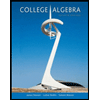Suppose that 20% of all people 16 years of age or older do volunteer work. Further suppose that women volunteer slightly more than men, with 22% of women volunteering and 19% of men volunteering. Round the values of z to 2 decimal places. Round your answers to 4 decimal places.- What is the probability of randomly sampling 140 women 16 years of age or older and getting 35 or more who do volunteer work?- What is the probability of getting 21 or fewer from this group?- Suppose a sample of 300 men and women 16 years of age or older is selected randomly from the population. What is the probability that the sample proportion of those who do volunteer work is between 18% and 25%?
Contingency Table
A contingency table can be defined as the visual representation of the relationship between two or more categorical variables that can be evaluated and registered. It is a categorical version of the scatterplot, which is used to investigate the linear relationship between two variables. A contingency table is indeed a type of frequency distribution table that displays two variables at the same time.
Binomial Distribution
Binomial is an algebraic expression of the sum or the difference of two terms. Before knowing about binomial distribution, we must know about the binomial theorem.
Suppose that 20% of all people 16 years of age or older do volunteer work. Further suppose that women volunteer slightly more than men, with 22% of women volunteering and 19% of men volunteering. Round the values of z to 2 decimal places. Round your answers to 4 decimal places.- What is the probability of randomly sampling 140 women 16 years of age or older and getting 35 or more who do volunteer work?- What is the probability of getting 21 or fewer from this group?- Suppose a sample of 300 men and women 16 years of age or older is selected randomly from the population. What is the probability that the sample proportion of those who do volunteer work is between 18% and 25%?
The probability of randomly sampling 140 women 16 years of age or older and getting 35 or more who do volunteer work is calculated as follows:
Step by step
Solved in 2 steps






